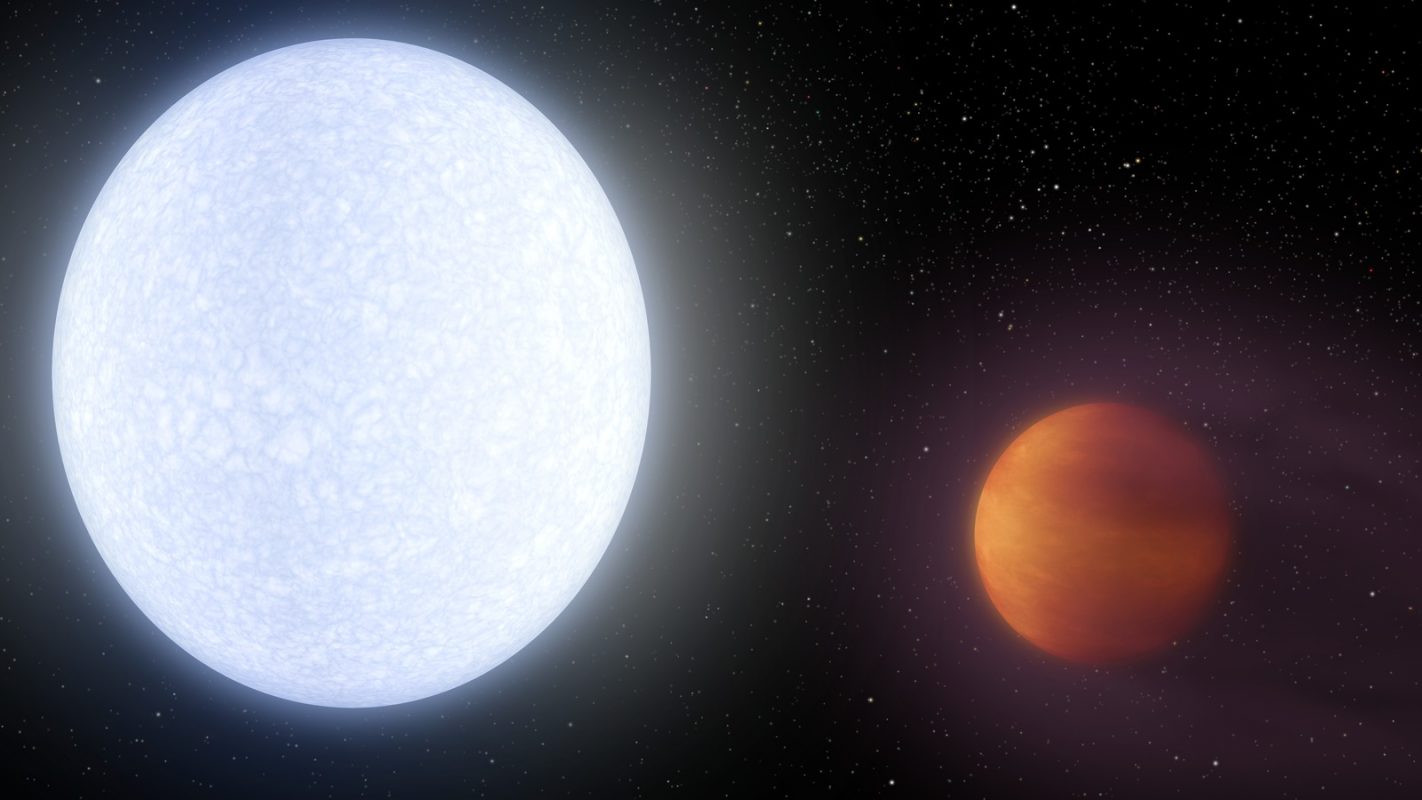Evidence from new measurement method. Findings could help search for Earth-like planets.
For the first time, the rare earth element terbium has been detected in the atmosphere of an exoplanet. Researchers at Sweden’s Lund University were able to prove this using a new method for analyzing these planets located outside our solar system. They published their findings in Astronomy & Astrophysics.
With an average temperature of 4,000 degrees Celsius, KELT-9 b is the hottest known exoplanet. By comparison, the warmest planet in our solar system, Venus, “only” reaches an average temperature of 465 degrees. KELT-9 b orbits its star about 670 light-years from Earth and was discovered in 2016.
More than 5,000 exoplanets are already known; they are mostly discovered by astronomers measuring the brightness of stars, because it decreases when a planet passes by. Thanks to Lund University’s newly developed measurement method, the dominant signals in KELT-9 b’s atmosphere could be filtered out. In addition to six other elements, including nickel and titanium, terbium was thus detected in the atmosphere – a very surprising finding, according to Nicholas Borsato, a doctoral student in astrophysics and lead author of the study.
Detecting heavy elements in the atmospheres of exoplanets will help to learn more about these distant celestial bodies and provide new insights into their age and formation, Borsato explains. This, he adds, also increases the chance of finding a second Earth in the future.
Also interesting: Just a few days before the discovery, another rare earth metal, samarium, was detected in the atmosphere of an exoplanet, making it the heaviest element ever found.
Photo: NASA/JPL-Caltech/R. Hurt (IPAC)


